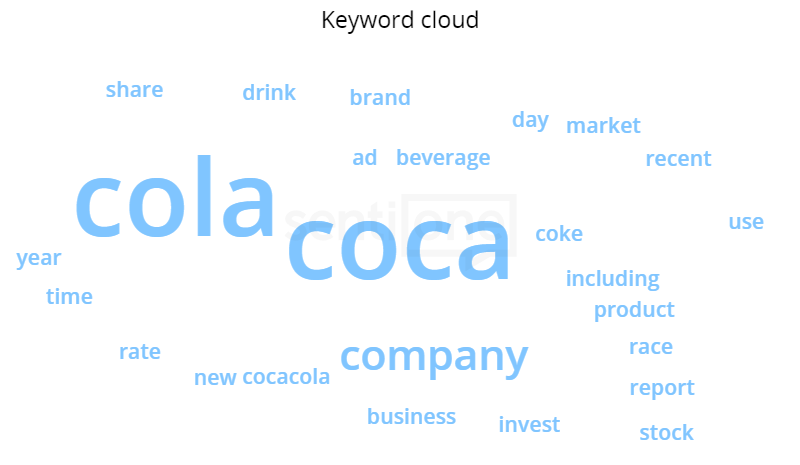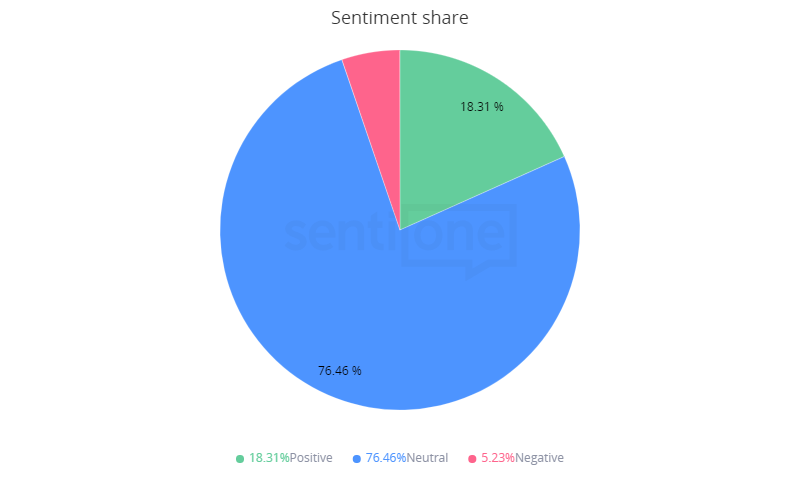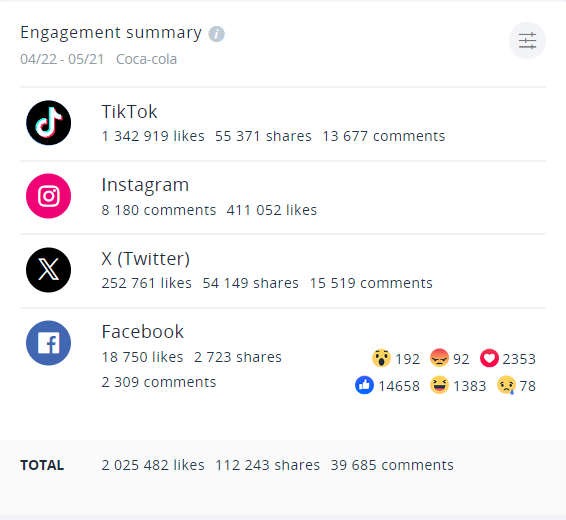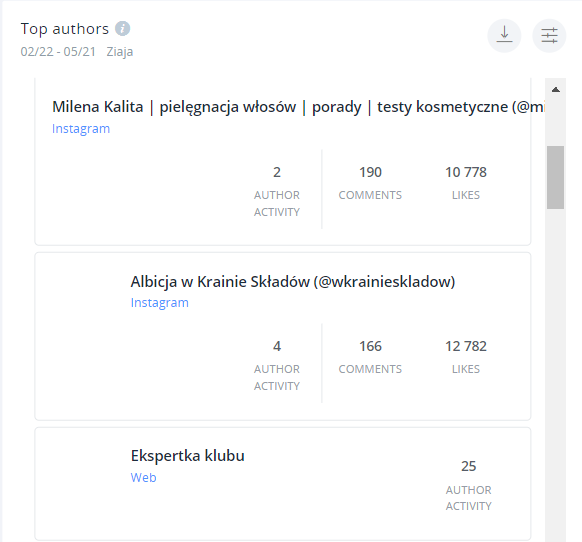Social media data analysis: how to turn data into decisions?
Social media is primarily said to: they allow you to carry out brand communication (inform about news, special offers, new collaborations, etc.), provide the customer with a quick contact to the company in case of a question or problem, and help build engagement around the brand (e.g., thanks to contest posts or posts that encourage activity). Last but not least, social media – thanks to the huge amount of data that users generate in it every day – provides a lot of valuable information from which important conclusions can be drawn for the brand. Below we explain how the analysis of data obtained from social media monitoring can influence better business decisions. We invite you to read more!
Social media data analysis – what is it and how can it help?
Social media provide a huge amount of data on consumer behavior, preferences and opinions. However, it is not enough to track them (e.g., with the help of appropriate Internet and social media monitoring tools) – in order to benefit from them, you need to analyze them, which will allow you to discover useful conclusions, trends and patterns. Social media research can be conducted, for example:
- Keyword analysis – identifying the most recurring words in the acquired data that indicate what people are talking about regarding your brand, competitors or industry,
- Sentiment analysis – determining the general tone of statements about your brand, which can be helpful in pointing out areas where you can improve your products, services or customer service,
- topic modeling – identifying the main topics covered in the data, which can then be used to understand what your customers are interested in and expect from you.
Thus, this type of information at the next stage can be used to make informed business decisions about marketing, customer service or product development, among other things.
Social media data – for what purpose to use it?
What exactly you use the information available on social media for will depend on the needs of your business. However, the following are typical areas where the information obtained can become helpful in making important business decisions – and how in this regard it can
1. Product development
Are you launching a new product? Surely you are curious to know what customers’ first impressions of it are! Learning about product reviews allows you to quickly identify the strengths and weaknesses of your new offering. By analyzing comments and reviews on social media, you can find out what customers like best and what needs improvement. For example, if many users praise a new product feature, you can focus on its further development and promotion. And on the other hand – if there are numerous complaints about a particular aspect of the product, you can take immediate corrective action before negative reviews spread more widely.
Such a proactive strategy not only allows you to better align your products with customer expectations, but also to build a positive brand image – one that listens and responds to the needs of its users. So you could say that by analyzing social media data in this area, you’ll kill two birds with one stone!
What’s more, analyzing social media data can help you identify customer trends and needs, which at a later stage can lead to the development of new products and services that better meet those expectations.
How can SentiOne help?
Using SentiOne, you can monitor consumer reactions to a product immediately after its release. Sentiment analysis will allow you to assess whether the product received a positive reception. If there is negative feedback, you can react quickly by improving the product or adjusting your marketing campaign (have you heard about the possibility of using a “negative” feature as a product advantage?). On the other hand, the AI Summary functionality (resulting from SentiOne’s integration with ChatGPT-4 ) will help you identify the most important product features that consumers liked (based on the mentions that appeared), which can be used in future marketing campaigns.


2. Planning marketing activities
Social media data can also provide companies with valuable information about what their customers are saying about products and services. This type of information can then be used to design marketing campaigns and create content that better resonates with audiences. By analyzing popular hashtags, topics of conversation and sentiments expressed by users, you can pinpoint the key aspects of your products or services that are most valued by consumers. This allows you to tailor your marketing communications to customer preferences, highlighting the most important features and appealing to the most current needs or expectations.
In this regard, it is also worth keeping track of competitors’ social media marketing activities – this can be a valuable source for checking which messages are received more positively and which more negatively by the target audience. In addition, tracking reactions to previous campaigns allows you to constantly improve your own marketing strategies and avoid the same mistakes. As a result, thanks to social media data, marketing activities become more precise, effective and engaging, which consequently (in the long term) translates into better sales results and strengthened customer loyalty.
In addition, monitoring customer engagement in real time allows you to react quickly to trends and events (real-time marketing), which can significantly increase the effectiveness of your marketing efforts.
How can SentiOne help?
SentiOne not only allows you to track mentions and study what customers are saying about your products, their needs and expectations, but also provides you with a range of demographic data that you may need when planning your marketing efforts. What gender are the people talking about your brand? What days of the week and times do they post most often? Which social media channels get the most mentions of your brand? What posts generate the most engagement? These are just a sample of questions to help you plan a new campaign in the digital channel, the answers to which can be found right here on SentiOne.

3. Improving customer service
Where can you expect a disgruntled customer (and those are sometimes unavoidable) to share their negative experience? By email? Perhaps. On specially created portals for this purpose, such as Opineo? Probably. Under your social media posts? Of this you can be more than sure. Why? Because this is the easiest and fastest way to share your opinion – social media, after all, everyone has “in hand” most of the time. At the same time, it’s the place that will make the issue immediately “go out” beyond the brand-consumer line, and you’ll definitely want to respond as soon as possible (so that as few people as possible become aware of the situation).
Customers driven by their private interests or negative emotions themselves provide you with a range of data to analyze. With the help of such data gleaned from social media, you can improve the level of your customer service – primarily by eliminating or minimizing the mistakes that your audience pays attention to, as well as by introducing the facilities and opportunities they need.
How can SentiOne help?
For example, thanks to the functionality provided to you by SentiOne’s recent integration with ChatGPT-4, you can get a summary of negative mentions of your brand in just a few seconds. The aforementioned AI Summary will allow you to do this, which analyzes the 300-400 most popular mentions of your brand, according to your guidelines. You can then ask the AI to pinpoint (based on data from social media, among others) what your customers are complaining about most often, and look for those issues that you are able to improve.

4. Identifying influencers
It’s also worth mentioning that social media monitoring can help companies identify influencers, i.e. people who are highly influential with their followers, in their industry. Thus, without having to conduct research on your own (a significant time-saver), you can decide to establish a fruitful advertising partnership for you.
How can SentiOne help?
In SentiOne’s Analytics module, for example, you will find the most popular authors, i.e. authors whose mentions had the highest estimated reach in the period you selected. Potentially among these authors are people who will fit perfectly into your expectations.

Social media data analysis – summary
The use of Internet monitoring tools – such as SentiOne, for example – may be limited only to tracking mentions and responding to alarming situations. However, if we can extract “something more” for our business from tracking data shared on social media, it is definitely worth taking advantage of. We’ve outlined examples of areas of interest above, but you can definitely detail others, depending on the needs of your business. How about trying to turn the data you have into the right business decisions?



